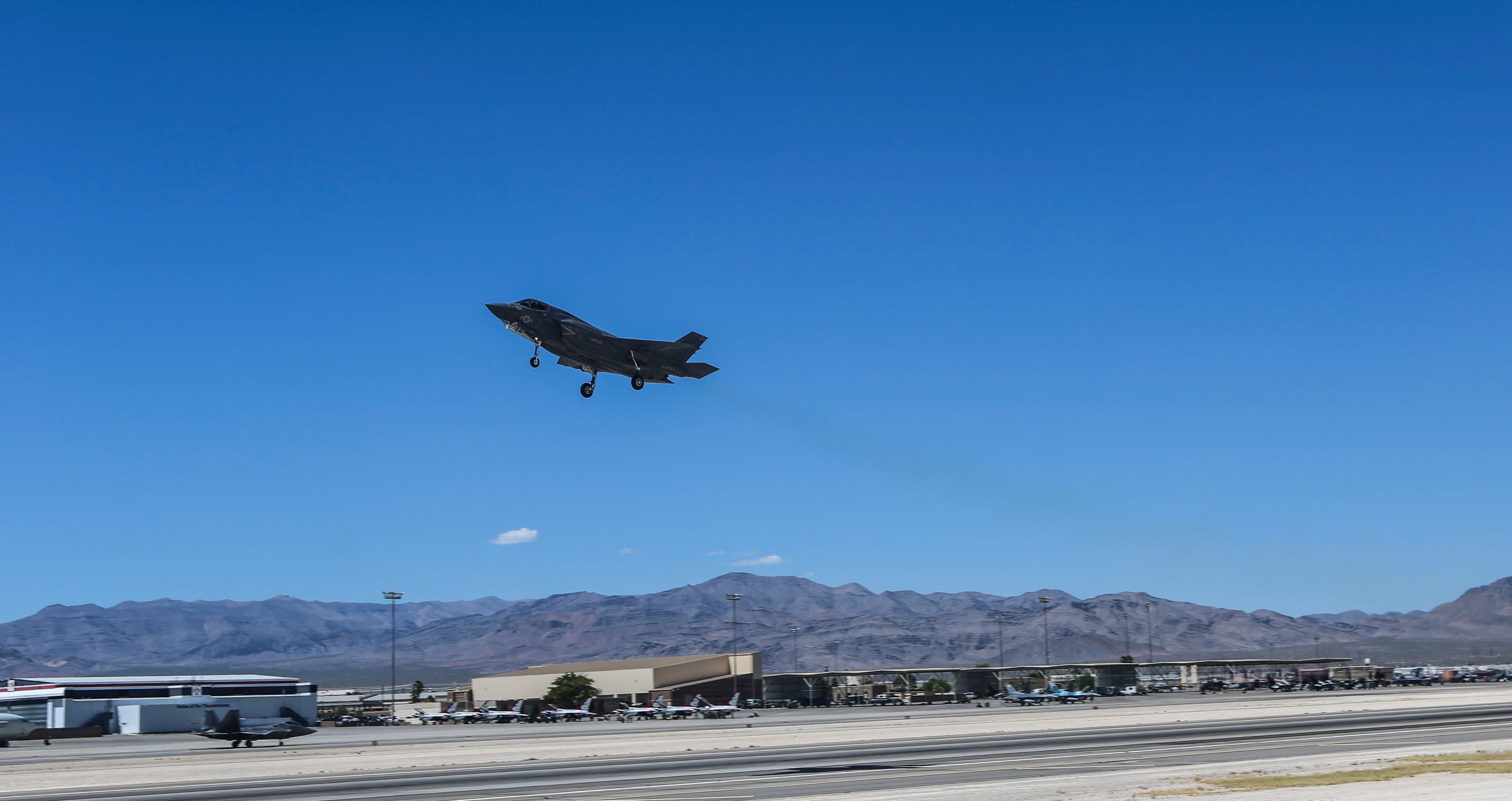
WASHINGTON, D.C. — The Marine Corps’ top aviator said the F-35B Lighting II Joint Strike Fighter pilots have matured in their understanding of the new platform in the year since the service declared initial operational capability (IOC), pushing themselves to push past planned tactics and create a new way of using the fifth-generation technology.
Lt. Gen. Jon Davis said today at an American Enterprise Institute event that he “stacked the deck” early with Top Gun graduates and weapons tactics instructors who could quickly understand the new plane and how to best use it. Over the last year, those Marines’ efforts have led to “unprecedented” successes in live and simulated tests, shooting down all targets and suffering no JSF losses in many cases.
Last summer, as a last step before recommending an IOC declaration, Davis tasked the first F-35B squadron with completing an operational readiness inspection – a test event borrowed from the Brits, he said.
As part of the test, Marine Fighter Attack Squadron (VMFA) 121 performed an armed reconnaissance mission that can sometimes take AV-8B Harrier and F-18 Hornet pilots all day to complete.
“These guys went out there and they found all the targets very quickly and killed all the targets,” he said, noting the early proficiency of the squadron.
“Most importantly, … we put a radar [surface-to-air missile] out in the objective area. In the old days we’d have to go take care of the radar SAM, get somebody in to go take care of that because you don’t do armed reconnaissance, which is patrolling for targets out there, unless you’ve got a permissive threat environment and you beat that threat. These guys went out with the SAM in the area and did that and they killed the SAM.”
Fast forward a year, he said, and the squadron has gone from proficient to innovative.
Davis brought Marine Corps Commandant Gen. Robert Neller to meet the pilots and learn about the planes and tactics. During the visit, the squadron was assigned two drills.

The first was done with fewer planes than Davis thought was needed, but otherwise went according to plan. He said the pilots were given a scenario that was “very high-end, off the ship, go into the jaws of death, double-digit SAMs, fighter threat, and go after a very strategic target on the ground. I watched them do it as a foursome, which normally I would say it would be 13 or 14 airplanes normally, what I would do as [commanding officer] of the weapons school, which I was. … They killed the fighters, they killed the SAMs, they killed the target, they came home.
“What was most interesting to be was not what they did but how they did it. It was very much the maturation of the pilots and how they’re flying this airplane, how they’re using information, communicating with each other, sharing information,” he continued.
“It was more like watching a pack of dogs go after something. And it was force-on-force, it wasn’t scripted,” so their success – particularly with so few aircraft – was far from guaranteed.
The second drill, though, did not go as planned – in the best possible way, Davis said. The planes were to fly a close-air support mission through clouds at 1,000 feet, with the planes in the 3F configuration that allows for pylons to externally carry 18,000 pounds of bombs.
“I’m out there, the commandant of the Marine Corps is out there, I want to impress the commandant,” Davis said.
“This first scenario was awesome, and then right before the second scenario I said, are we ready to go? And this young major comes up … he goes, ‘we’re not going to do exactly what you want us to do.’ I’m like [eyes grow wide]. “Because we didn’t think the tasking was challenging enough. So we’ve got two that are slick and two that are loaded up as bomb trucks. We can do the job sir, don’t worry.’”
So two planes forfeited their external carry capacity in exchange for stealth, and “it was a work of art,” Davis said. The planes hit all their targets in five and a half minutes, with the four planes passing images through the clouds and successfully taking out the missile threat early on.
“I just watched, I’m like, that’s not how my brain works, but that is the way their brains are working,” he said.
“Gen.(Charles) Krulak, who I used to work for, said ‘you don’t man the equipment, you equip the man,’ so we’re equipping these young Marines, this generation that doesn’t know any bounds for latitude for technology, and they’re leveraging this technology and doing great things.”
After the event, Davis told USNI News that, in addition to the squadrons, the F-35B test squadron has been an agent for innovation with the new airplane.
“We have VMX-1, which is our test squadron. We put very creative folks in there and they’re asking why all the time,” he said.
“One, they’re actually getting the test plan we’ve got to do for the airplane to get the capabilities as quick as we can, but they’re also, they have tactical hunger and they want to do better and they see opportunities out there, can we do this, can we do this can we do this.”





